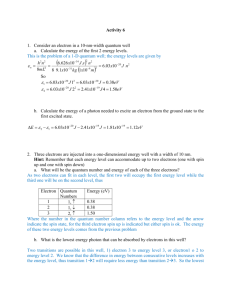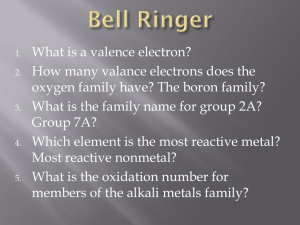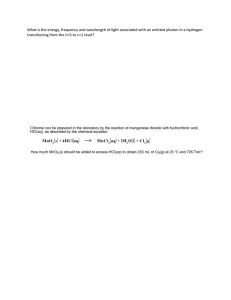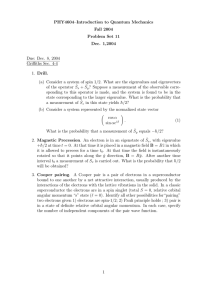COMMUNICATION BY EPR DEVICES D. DIEKS
advertisement
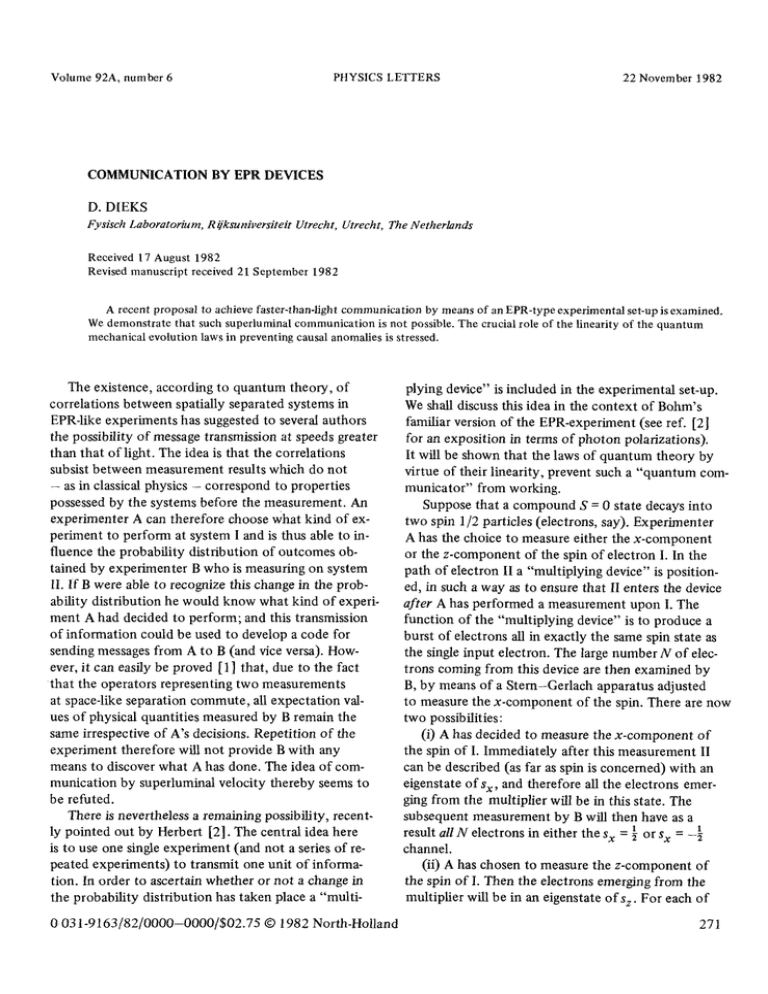
Volume 92A, number 6 PHYSICS LETTERS 22 November 1982 COMMUNICATION BY EPR DEVICES D. DIEKS Fysisch Laboratorium, R ~jksuniversiteit Utrecht, Utrecht, The Netherlands Received 17 August 1982 Revised manuscript received 21 September 1982 A recent proposal to achieve faster-than4ight communication by means of an EPR-type experimental set-up is examined. We demonstrate that such superluminal communication is not possible. The crucial role of the linearity of the quantum mechanical evolution laws in preventing causal anomalies is stressed. The existence, according to quantum theory, of correlations between spatially separated systems in EPR-like experiments has suggested to several authors the possibility of message transmission at speeds greater than that of light. The idea is that the correlations subsist between measurement results which do not - as in classical physics - correspond to properties possessed by the systems before the measurement. An experimenter A can therefore choose what kind of experiment to perform at system I and is thus able to influence the probability distribution of outcomes obtained by experimenter B who is measuring on system II. If B were able to recognize this change in the probability distribution he would know what kind of experiment A had decided to perform; and this transmission of information could be used to develop a code for sending messages from A to B (and vice versa). However, it can easily be proved [1 ] that, due to the fact that the operators representing two measurements at space-like separation commute, all expectation values of physical quantities measured by B remain the same irrespective of A's decisions. Repetition of the experiment therefore will not provide B with any means to discover what A has done. The idea of communication by superluminal velocity thereby seems to be refuted. There is nevertheless a remaining possibility, recently pointed out by Herbert [2]. The central idea here is to use one single experiment (and not a series of repeated experiments) to transmit one unit of information. In order to ascertain whether or not a change in the probability distribution has taken place a "multi0 031-9163/82/0000-0000/$02.75 © 1982 North-Holland plying device" is included in the experimental set-up. We shall discuss this idea in the context of Bohm's familiar version of the EPR-experiment (see ref. [2] for an exposition in terms of photon polarizations). It will be shown that the laws of quantum theory by virtue of their linearity, prevent such a "quantum communicator" from working. Suppose that a compound S = 0 state decays into two spin 1/2 particles (electrons, say). Experimenter A has the choice to measure either the x-component or the z-component of the spin of electron I. In the path of electron II a "multiplying device" is positioned, in such a way as to ensure that II enters the device a f t e r A has performed a measurement upon I. The function of the "multiplying device" is to produce a burst of electrons all in exactly the same spin state as the single input electron. The large number N of electrons coming from this device are then examined by B, by means of a Stern-Gerlach apparatus adjusted to measure the x-component of the spin. There are now two possibilities: (i) A has decided to measure the x-component of the spin of I. Immediately after this measurement II can be described (as far as spin is concerned) with an eigenstate O f S x , and therefore all the electrons emerging from the multiplier will be in this state. The subsequent measurement by B will then have as a result a l l N electrons in either the s x = ~1 or s x _- - 3 1 channel. (ii) A has chosen to measure the z-component of the spin of I. Then the electrons emerging from the multiplier will be in an eigenstate o f s z . For each of 271 Volume 92A, number 6 PHYSICS LETTERS these electrons the probability is i to show, upon measurement, a value of s x = -+za-. Therefore, approximately ~N electrons will end up in the s x = ~ channel, and likewise approximately ~ N electrons will arrive in the s x = - ~ channel. It is clear that the above scheme - if correct - provides a way for B to find out which choice has been made by A, even if allowance is made for appreciable noise generated in the multiplier. The possibility of superluminal communication therefore seems to be restored. Unfortunately, a "multiplying device" meeting the requirements described above is inconsistent with the laws of quantum mechanics. This will now be shown. Let us assume that an electron in an eigenstate of s x will, upon entering the multiplier, produce a burst consisting of N electrons in the same spin state. Symbolically we can represent this process as follows: Ix+ >IM0>~IM_+>[X_+;N>. Here IM0 )is the "neutral" state of the multiplier, before the electron enters; Ix+ ; N ) represents the Nparticle state o f N electrons all in the same spin eigenstate Ix-+); JM-+) is the state in which the multiplier is left. After interaction with the Stern-Gerlach apparatus all N electrons will arrive in either the s x = +21-or s x = - 3 channel, depending on whether the incoming electron was in spin state ix+) or Ix_ ). Suppose now that the incoming electron is in one of the eigenstates of Sz, I z-+ ). In view of the relation Iz+_ 5 = ~,,/2(Ix+ 5 -+ tx_ 5), a n d in v i e w o f t h e l i n e a r i t y o f t h e q u a n t u m mechanical e v o l u t i o n o p e r a t o r , the effect of this incoming elec- tron on the multiplying device is completely determined. Symbolically, we have: Iz-+)lMo) = ~-x/2(Ix+51MoS-+ Ix_ )IMo)) -+ ~x/2 (IM+ 5Ix+ ;N) + IM_ )Ix_ ; N 5) de f q5. On the other hand, the definition of the multiplier as employed in the superluminal communication experiment as described above would require Iz-+) l g 0 5-+ IM-+51 z-+ ; N ) , where the right-hand member represents a burst of electrons all in the Iz-+ ) state. Now, the crucial point is that the state q~ predicted by quantum mechanics is not identical with the final state required by the definition of the multiplier. Therefore, the working of the 272 22 November 1982 multiplier as defined c a n n o t b e c o n s i s t e n t w i t h q u a n t u m m e c h a n i c s . That q~ does not represent N electrons in an eigenstate o r s z is perhaps most easily seen by computing the probability, in state q5, for finding N / 2 1 1 electrons with s x = +3 and N / 2 electrons with s x = - ~ . The N particle states Ix+; N ) and I x ; N ) w h i c h occur in • are orthogonal to states with N / 2 particles in state Ix+) and N / 2 particles in state Ix_); the required probability therefore is zero. Spin measurements on the particles described by q~ will consequently not have the results envisioned in the superluminal communication set-up described above. In case A chooses to measure the z-component o f the spin o f electron I, quantum mechanics predicts that B will not find an even distribution of electrons over the s x = ½ and s x = - 3 channels. In fact, it is easy to see from the form of q5 what B will find. There are two possible measurements outcomes: either all N electrons will arrive in t the s x = ~ channel or they will arrive in the s x = - ~ channel. Either one of these possibilities has a probability of ~ of being realized. For B the situation is therefore exactly the same as when A decides to measure the x-spin-component. According to the quantum mechanical predictions there is, consequently, no way for B to find out, on the basis of his measurements results, what A has done. Quantum mechanics does not allow superluminal communication. It has been maintained in the literature [1 ] that the fact that operators corresponding to measurements at space-like separation commute with each other is sufficient to guarantee that quantum mechanics does not allow causal anomalies, i.e. transmission of signals faster than light. It now appears that this statement is not quite complete. The linear character of the quantum mechanical evolution laws turns out to be an essen tial element in preventing such causal anomalies from occurring. I wish to thank Dick Hoekzema for enlightening discussions. References [1] P. Eberhard, Nuovo Cimento 46B (1978) 392; G.C. Chirardi, A. Rimini, T. Weber, Lett. Nuovo Cimento 27 (1980) 293. [2] N. Herbert, Flash - a superluminal communicator based upon a new kind of quantum measurement, Preprint 812003, National Science Foundation, Boulder Creek.

